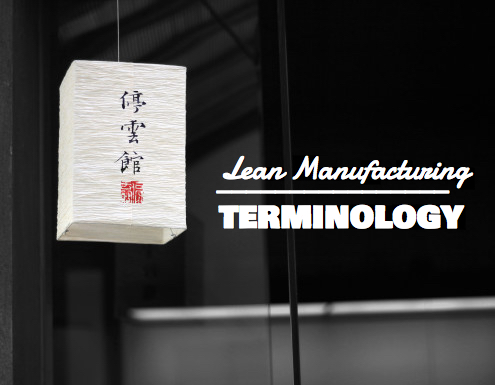
Companies that implement lean manufacturing principles aim to reduce the amount of waste in their processes. There are 7 wastes in lean manufacturing, which consume resources but add no value for the customer. They are:
- Over production
- Waiting
- Rejects
- Excess motion
- Over processing
- Inventory
- Transportation
Over production
Over production is where companies produce more of a product than is required by the customer. This can lead to problems with obsolete stock, inventory build ups, excess motion and excess transportation to handle the excess inventory. Over production can also prevent rejects being spotted early enough, and therefore increases the amount of rework. Lean companies work to the principles of just in time, making only what is required by the consumer on a pull basis. Within lean, over production is considered to be the worst of the seven wastes as on its own it can lead to all of the other types of waste.
Overproduction is the worst of the seven wastes - it can lead to all the other types of waste. - Click to Tweet
Waiting
Perhaps the most obvious form of waste is downtime or waiting. The aim is to have the right people in the right place at the right time. They need to assemble the right parts with the right equipment in the right quantity, ready for delivery to the customer. If any of those elements are delayed or a problem occurs then the process stops and all other elements have to wait while the problem is fixed. Lean organisations have support structures in place to respond quickly to any downtime. They also perform extensive root cause analysis to determine why the problem occurred and to put measures in place to prevent recurrence.
Rejects
Another fairly self-explanatory form of waste is defects or rejects. If a part is damaged during machining or assembly then often it can no longer be used and has to be scrapped. Not only does this cost the company money, but often they will need to produce a replacement or rework the original. This places additional stress on the systems and processes and consumes further resources. Quality inspectors have to be employed to check for defects to protect the end customer. Lean companies will implement poka yoke devices to prevent defects being produced. Zero defects or right first time is the mantra.
There is an overlap here with six sigma. This is a quality improvement methodology focused on the reduction of variation in the manufacturing process. The aim is to reduce rejects to a level below 3.4 defects per million opportunities. This has led many companies to implement hybrid, “lean six sigma” strategies.
Excess motion
Excess motion is another type of waste. This is where an operator is required to move more than necessary to perform a task. This might be to obtain materials, tooling or information required to complete the process. Often, excessive motion is caused by a poor layout. Companies implementing lean will try to arrange workstations as efficiently as possible to minimise the amount of movement for the employee.
Over processing
Over processing, or over engineering as it is sometimes known, is another lean waste. Anything that is done to a product that is over and above what the customer requires is over processing. These activities consume time, energy and money while adding complexity and therefore risk to the process. The customer is not willing to pay for the cost of these additional processes, so over processing increases costs but not price. Therefore profit margins are eroded. Lean companies that eliminate over processing can make higher profits.
Inventory
The sixth type of waste is inventory. Inventory can be in the form of raw material, purchased finished parts, work in progress or finished goods. At each stage in the process the cost of the inventory increases based on the value that has been added. Lean companies aim to control inventory and hold only what is required to maintain flow through the process.
Transportation
Finally, a lean manufacturing organisation will optimise transportation. Transportation is the movement of inventory. It is not possible to completely remove all transportation. However by studying the inbound flow of material from suppliers, and the outbound flow of finished goods on a value stream map, it is possible to identify improvement opportunities. Many lean companies make use of logistics providers, cross-dock facilities and milk runs. Given the high price of fuel, optimising transportation can lead to significant cost savings.
Successful lean manufacturing in companies
There are many companies around the world that are using the principles of lean manufacturing to identify and eliminate waste in their operations.
Lean is no longer just a manufacturing philosophy either. The principles have been gaining more exposure and coverage in other industries, notably the healthcare sector in the last ten years. This has even led to an increase in recruiters looking for those with kaizen experience to fill lean manufacturing jobs.
Companies that successfully implement lean manufacturing tools have seen benefits in the areas of safety, quality, delivery and profit. Many leading lean companies are also at the forefront of environmental initiatives to minimise the waste in greenhouse gases, water and energy consumed.









